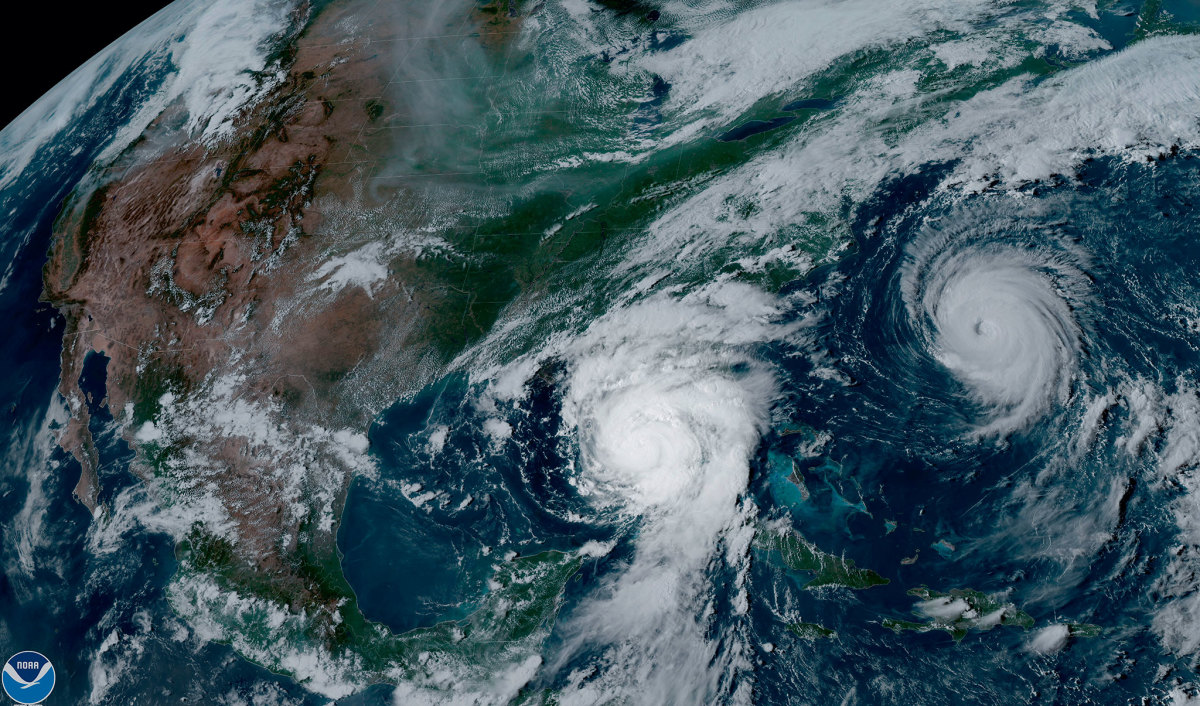

Picture credit score: NOAA Satellites
Citing the confluence of three main climatological elements, forecasters from NOAA’s Nationwide Climate Service are predicting an especially energetic Atlantic hurricane season with the best variety of named storms NOAA has ever issued for its Might outlook. NOAA is forecasting 17 to 25 named storms, 8 to 13 of them anticipated to turn into hurricanes, together with 4 to seven Class 3 storms or greater. Forecasters stated they’ve 70% confidence within the ranges, predicting an 85% likelihood of an above-normal season.
The driving elements behind the predictions are the anticipated improvement of La Niña within the Pacific, which generally reduces wind shear within the tropics, report heat ocean temperatures within the Atlantic, and a predicted above-normal West African monsoon, which may delivery the waves of vitality that turn into among the Atlantic’s strongest and longer-lived storms.
“We’ve seen a variety of seasons the place we have now a heat ocean however an excessive amount of shear, otherwise you don’t get an African monsoon,” NWS Director Ken Graham stated at a press convention in Washington, D.C., yesterday, saying the forecast. “It’s all coming collectively. This can be a state of affairs the place you mix elements…all the pieces has to return collectively. All of the vitality within the oceans, examine; an energetic African monsoon, examine; don’t count on a variety of shear, examine.”

Picture credit score: NOAA
Matt Rosencrans, the lead hurricane seasonal forecaster and writer of the outlook, stated that Atlantic temperatures are 1-2°C above regular, “equal to what we might usually see in August, and so they’re dramatically greater than what we had been seeing in 2005, and even 2010.”
Temperatures in foremost storm improvement areas are 120 days forward of the place they usually could be, he stated. “That may have a variety of implications for early and late season exercise, and that longer exercise is what we sometimes see in these busy seasons as properly…La Niña decreasing wind shear in bulk lets that West African monsoon and heat sea temperatures shine by means of.”

NOAA can also be forecasting the second-highest ACE—the Amassed Cyclone Power index—for the Might outlook; 2010’s Might outlook holds the report for the best. Primarily a excessive wind index, ACE refers back to the collective energy and period of Atlantic tropical storms and hurricanes occurring throughout a given season.
Graham emphasised the significance of being ready.
“Each Class 5 storm that made landfall within the U.S. in final 100 years was a tropical storm or much less three days prior. The large ones are quick,” he stated. “You have a look at a season like this, you could possibly see some fairly sturdy storms with this forecast…they don’t care about timelines. Preparedness is all the pieces. On these Class 5s, the typical lead time was 55 hours.”
He additionally famous that it’s extra vital to give attention to hurricane impacts than latching onto a class, which makes use of solely windspeed as a measure. For instance, he stated, between 2013 and 2023, 90% of fatalities from hurricanes had been from water, not wind—57% from rainfall and half of these in vehicles.
Inland results might be as dangerous or worse than the place the storm comes ashore, largely because of heavy rainfall. To assist folks visualize this, NOAA has developed a brand new, experimental factor in its acquainted “cone of error” graphic that shows potential landfall, including potential impacts inland.

NOAA Administrator Rick Spinrad stated that new instruments are serving to higher equip forecasters, together with a brand new era of Flood Inundation Mapping. “President Biden’s Investing in America agenda has allowed us to deploy close to real-time flood inundation maps throughout the nation and start our path for next-generation radar,” he stated. “These investments are crucial.”
One other new device is the Modular Ocean Mannequin, aka MOM6, which, in accordance with a NOAA media launch “will likely be added to the Hurricane Evaluation and Forecast System to enhance the illustration of the important thing function the ocean performs in driving hurricane depth. One other mannequin, SDCON, will predict the chance of tropical cyclone speedy intensification.”
And, within the ocean itself, new eyes will collect information all through the storms. As much as a dozen Saildrones—uncrewed floor automobiles that may collect and ship one-minute information in actual time—will likely be deployed this season, whereas Directional Wave Spectra Drifters (DWSDs) will likely be deployed from NOAA hurricane hunters in a storm. And, a brand new light-weight dropsonde will likely be deployed into creating tropical storms to supply real-time wind information.
“NOAA’s Local weather Prediction Middle will replace the 2024 Atlantic seasonal outlook in early August, previous to the historic peak of the season,” the media launch famous.
For extra data, in addition to hyperlinks to the assorted instruments and science used to foretell and monitor hurricanes, go to noaa.gov.

Might 2024
Trending Merchandise
[product_category category=”trending” per_page=”8″ columns=”2″ orderby=”date” order=”desc”].
